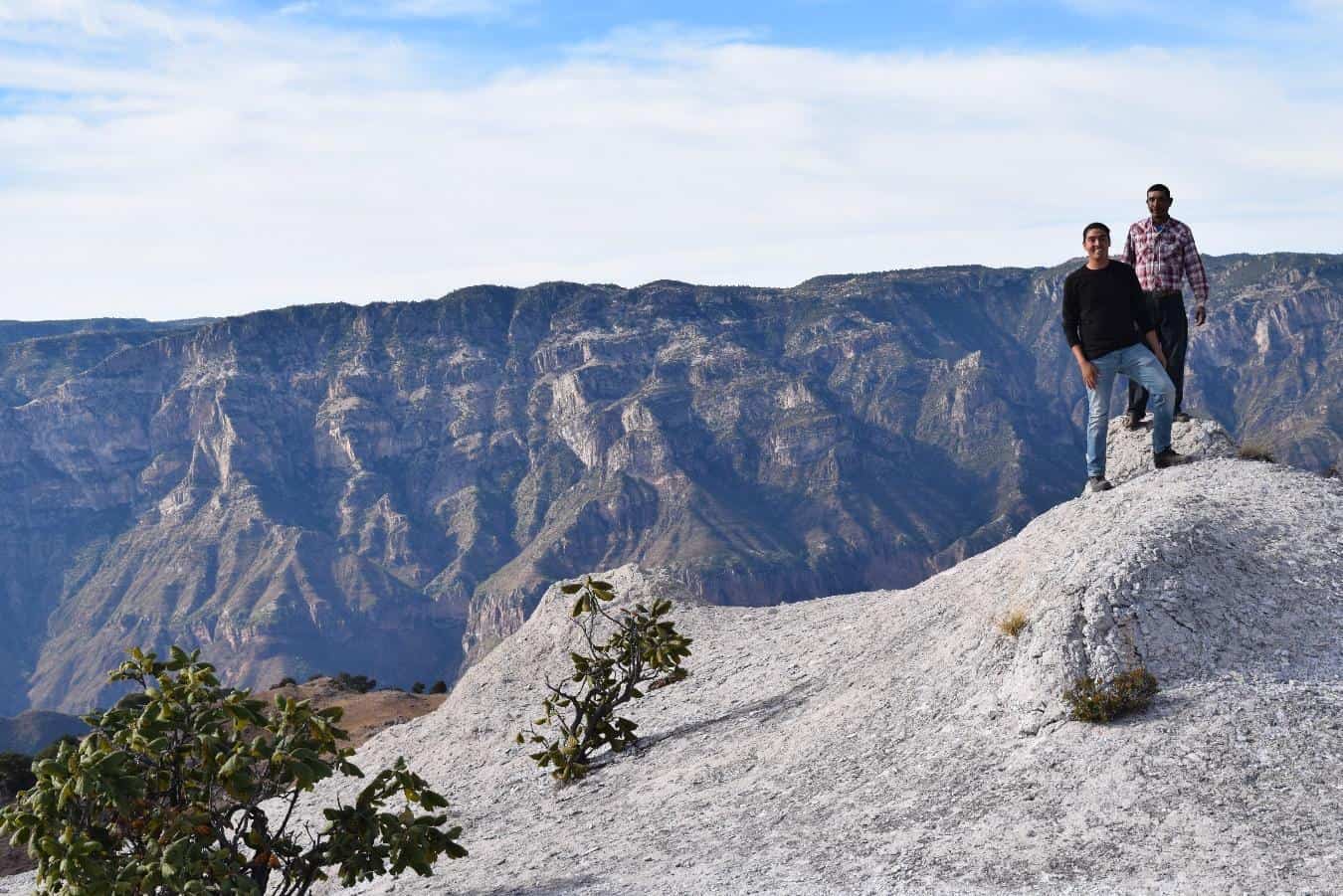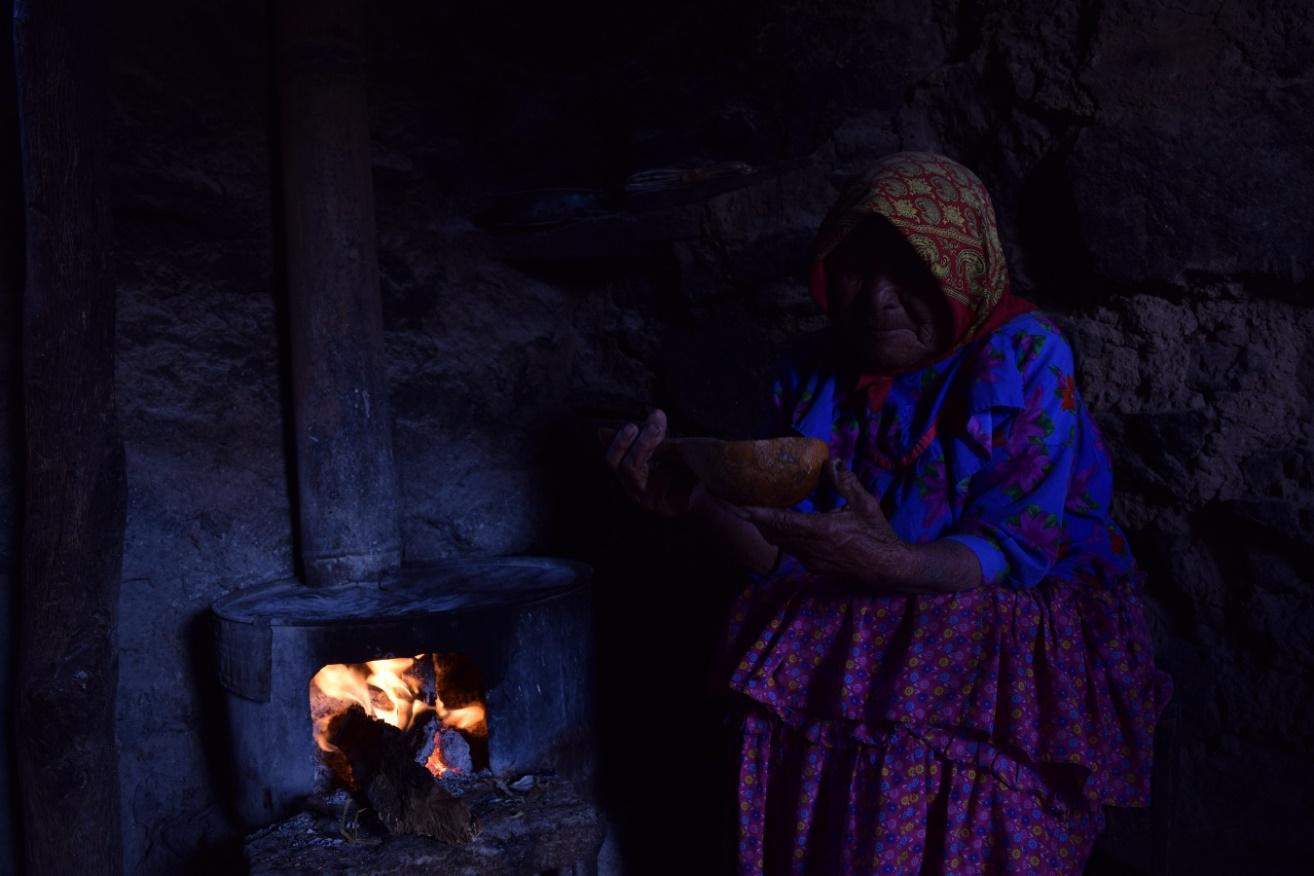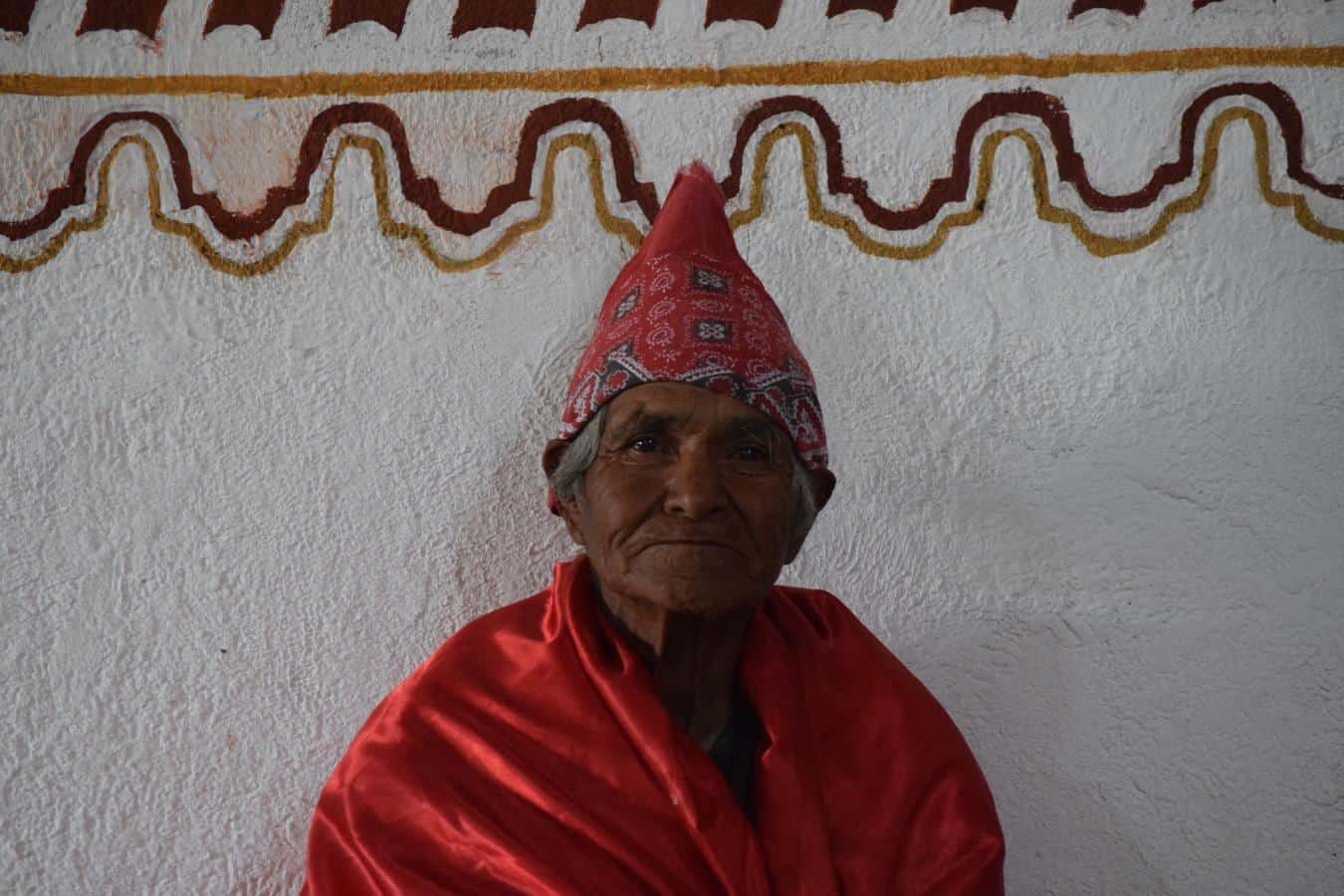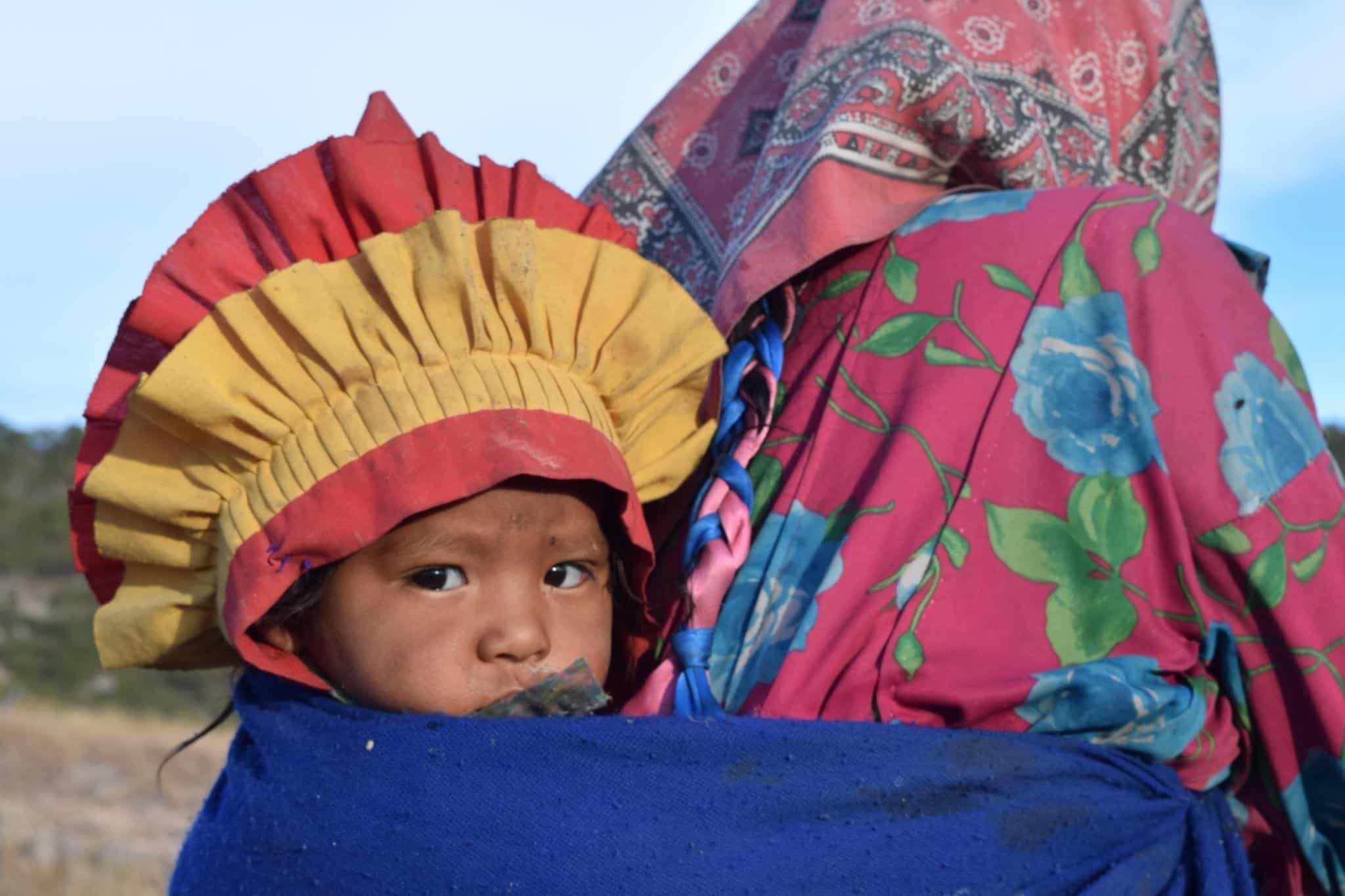“Dedicate yourself to love people,” is the advice Ricardo “el Ronco” Robles told to all the Jesuits sent on a mission to Cooper Hill, with the Tarahumaras, a tribe from northern Mexico. But, how is it possible to love when the environment is so complicated? Geography, weather and multiple kind of violence framed that month of accompanying Jesus´ beloved at the heart of the Tarahumara Hills.
“He is going ahead of you into Galilee. There you will see him” (Mt 28, 7.) said an angel to the disciples as they run to share that Jesus is risen. In my case, Galilee is called Pamachi, a community where I did ministry during Christmas week in 2021, at the very heart of the Tarahumara mountains in northern Mexico. The morning after I arrived to Pamachi, Benjamin, a member of the tribe, knocked on the door and invited me for a walk. I quickly agreed. After having a cup of coffee, I grabbed my water bottle, put my camera in my backpack, and began to walk with Benjamin on roads so small and so long that they resembled the veins of the mountains taking us to their heart: the indigenous families. Despite the fear of not knowing what would happen that day, God made himself present in concrete signs that reveal what his Kingdom is like: his Kingdom is a community of pilgrims, and a kingdom that celebrates life.

In the rocky landscapes, dried rivers, and an overwhelming silence as powerful as sunlight, I found God´s presence in the Tarahumara way of living, or surviving, the extreme poverty into which they are born: they depend on each other. They can not survive alone, they need each other, and they know this. That day I experienced that the Kingdom of God like a community mutually helping each other to build a house. After a three hour walk, people gathered at a house under construction; youth carried on their back buckets of water and soil to make adobe bricks, an older man mixed all the materials and put them into boxes to shape the brick, and women took care of their children and prepared the food and drinks to share with all. As pine branches were placed between the mud to give greater resistance to the mud block, “Tesguino” (a fermented corn-based beverage) was given to all people. The community way of living is sharing everything, and after I received a drink from the host, it was my time to give back a sip of Tesguino to all people there.
They share food, drink, land, water and sun, and above all, the festive atmosphere of knowing they are Tarahumara roots their hearts in the community with those who celebrate their life and poverty.
Benjamin and I kept walking to visit more families. Houses were separated with a more complex geography to walk through. The silence in those enormous mountains allowed me to recognize God dwelling in every thought that crossed my mind. Every house we visited received us with some Tesguino, and later on, a question that evidenced a complaint, and I did not expect to hear was: Why didn´t you come? Despite it being the first time I visited their house, I knew that they spoke to the Jesuits, because it is difficult for the two Jesuits priest in that parish to visit the ninety indigenous communities they accompany. A lump closed my throat for not knowing what to say about the decrease of people serving in the Church. That’s when I knew it was time to be with them, with all my heart, soul and body to accompany them completely in the short time I was in their homes.
After five hours walking, and trying no to think of the walk back home, tiredness turned into joy and happiness by feeling amazed by the sincerity and closeness of the Tarahumaras. Finally, we arrived to the furthest house of the village, where María lives. She is an elder who proudly prays in front of all the community during religious festivities. Her small house, made of stone and mud, was stained inside by the smoke from the fire that they used as a stove and heater for the six women living there. Next to the door was a small cross made of straw, the only Christian sign I found among all the houses I visited, and I felt joy by finding God in those small and poor signs which reveal their way of living faith.

I did not hesitate, and I said to this old lady: “Maria, will you teach me how to pray in Tarahumara? Faced with my desire to listen to her prayer, her short answer was clear: we only pray in the temple. At that moment I knew that the kingdom of God resembles the little old lady who walks five hours to get to the temple and pray with the whole community, the way God reveals Himself to them. Those few words containing the strength of a common faith, made me anxious about the Christmas Eve celebration the next day. Benjamin and I walked back to the Jesuit community for four hours, and all the families we met earlier that day welcomed us with great joy.
The Christmas celebration evidenced a joyful, common faith that solidified for me the revelation of God’s love for the Tarahumaras. This joyful time among the poor who revealed to me their way of knowing how Tarahumaras are loved by God. On Christmas Eve at noon, I heard a group of musicians coming to the church accompanied by a group of dancers. Their red capes and their crowns covered with colored paper broke the monotony of the dry landscape.. Their movements and dances formed circles inside the chapel and outside. Benjamin was there with all his family. María all dressed up, began to pray with the whole community, the Our Father. The most important prayer was community dancing along with guitars and violins played by members of the village I met the day before.

Two hours of praying, dancing and sharing Tesguino were followed by a break for all the people. At that moment I saw an elder dancer sitting on a bench inside the chapel. His red cape lay on his shoulders and a red scarf placed on his forehead shone as his gaze captured my thoughts. His light smile revealed his liking for me and for the camera I had in my hands. Without thinking, I took some pictures of his tired and happy face. Though we barely knew each other, our mutual gaze held peace, joy and contentment. After taking that picture into my prayers, I felt like it was God himself letting me contemplate him in his humble friends. Since that day, every time I take a picture, I feel that the Kingdom of Heaven resembles a Dancer who allows himself to be contemplated and reveals how God allows us to look at him.
The Christmas celebration ended in the chapel, but the whole community continued on pilgrimage to five houses where they received food and drink as part of the cultural Christmas festivity. The dancing continued, the music did not stop throughout the night and the bonfires showed the place where the community celebrated the birth of Jesus in the heart of the Sierra Tarahumara. Jesus, again, was born among the poor, and they received him with communal joy. I learned that loving people in their way of living and celebrating their faith is the purest love we can experience and share.
Let us ask God that our lives be dedicated to loving people as they are and as He loves them.
In loving memory of Javier Campos SJ and Joaquín Mora SJ, Jesuit missionaries who lived among Tarahumara people for decades, and were martyred on June 20, 2022.

All images courtesy of the author.


